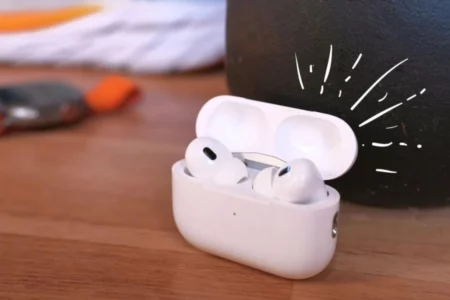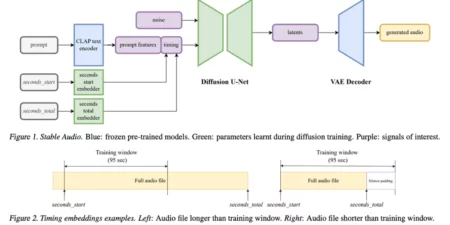So, you’ve just put a new subwoofer in your car’s audio system to assist increase the bass and overall sound quality, and you’re ready to turn up the volume and blast your favorite tunes. However, before you can fully utilize it, you must first go through a break-in process.
You may be asking how to break in a subwoofer properly. Questions like what is the subwoofer break in frequency or subwoofer break in period might fill your brain and confuse you with the technicalities but hold your horses, and we are here to help you through it.
We’ll describe what breaking in a subwoofer entails, why it’s important, and how to do if blown. Here give you a better knowledge.
Subwoofers: An Overview
A subwoofer is a low-frequency loudspeaker meant to reproduce lower frequencies (bass) that a typical audio system cannot.
They’re a common addition to many automotive audio systems, and they may be found in many sizes and designs. Unpowered component subwoofers, on the other hand, are the most popular sort of subwoofer.
What Does It Do?
Subwoofers produce a louder sound and a deeper bass, allowing you to not only hear but also feel your music. The majority of subwoofers will create bass tones between 60 and 250 Hz.
Because bass is a tough frequency spectrum for your OEM stereo to replicate, having a subwoofer is ideal for listening to bass-heavy music, but it’s not the only benefit.
A subwoofer also relieves the load on your existing speakers, which would otherwise strain to reproduce lower frequencies, resulting in a better overall system. This allows your audio system to offer a more vibrant, full-bodied sound without distortion, even at higher frequencies.
A professionally installed quality subwoofer system and a high-power amplifier and head unit are recommended for the best overall sound.
What Does It Mean to Install a Subwoofer?
Like any other piece of equipment or machinery, subwoofers are made up of moving parts, which can feel stiff when they’re spanking new.
Because of this stiffness, the parts may struggle to respond adequately to the electric current from the amplifier that drives them.
This is due to a component known as the spider, which works as a suspension and allows the cone to move back and forth to make a sound.

As a result, in order to obtain the finest possible sound, subwoofers should be broken in. Consider it like waking up in the morning and scrolling through your phone to awaken before getting out of bed fully.
But, on the other hand, breaking in a subwoofer needs to be done once, after which you won’t have to worry about it again. After having the subwoofer professionally placed in your automobile, the breaking-in procedure entails playing it for some time.
The biggest advantage is that it helps release the unit’s suspension, improving overall performance and bass output. This will also help your subwoofer last longer.
How to Properly Break In a New subwoofer? (3 Steps)
Method 1: When you get the subwoofer home, turn it up to maximum level without plugging it in. Even if you don’t damage the sub, you won’t get the best performance out of it. Instead, use the following 3 step procedure:
1) Examine the Connections:
It’s easy to make a mistake when connecting your new subwoofers in the excitement of obtaining your new gear. For example, 16-gauge speaker wires are appropriate. You also don’t want to short out your amplifier. These subwoofers are going to be useless.
2) Play at a Medium Volume:
Play the song you’ve chosen at a moderate volume for fifteen or twenty minutes. This gives the driver time to become used to the amp and start the warm-up process. This allows the polymers in the suspension components to start loosening up.

Related Blog: How To Break in New Speakers?
To make it a little louder, use a Full Break-In Time. Then, play it for around two hours at twice the normal volume. If you leave during that period, you will notice that the subs are louder when you return. This is the case because the mechanical components, which we’ll talk about later, are becoming more flexible.
3) Look for a Recording that can be Looped:
When it comes to breaking in your subwoofer, you want something that has consistent and repeating deep bass. Even if you enjoy Beethoven’s fifth’s percussive start, you’ll need something with a more consistent and deeper beat. A reggae track is a fantastic choice. Ensure that there is enough bass for the driver to move.
The process will be completed by playing for 10-12 hours at a moderate level. This extra working time can result in an additional gain of 1 to 2 decibels.
Method 2: While the first method was more about subwoofer break in frequencies and subwoofer break in period, this method necessitates using a few special tools, but it results in a considerably faster break in. We achieve this by testing the woofer in a free-air enclosure before installing it.
TOOLS REQUIRED:
- Tone Generator: You may use your phone for this; go to your app store and download a tone generator app.
- 3.5 mm jack to RCA adapter, allowing you to connect your phone to your amplifier directly.
- Your woofer will be mounted on a firm surface. Because the woofer can’t breathe, it doesn’t free air with the back-plate against the surface. We recommend suspending your woofer between two chairs or tables by fixing it in a piece of wood with enough space on both sides.
- An amplification device.
- A good indication. You may view this signal by mounting your SoundQubed amplifier and turning the remote knob.

You have 20 to 24 hours of free time.
You can begin the break-in process now that you’ve gathered your tools. First, play a 30 Hz-60 Hz sine sweep. If your app cannot do so, play a 40 Hz tone throughout the break in, as these are the subwoofer break in frequencies.
For a solid break-in time, we recommend 20-24 hours. Overnight, you may set it up with a good clear signal. Once you’ve completed this, you’re ready to install and get started.
What are the Benefits of Breaking in a Subwoofer?
So do subwoofers get louder as they break-in? A subwoofer’s performance improves once it has been broken in. The output of your subwoofer will be enhanced, and the music will be desirable.
One reason to break in a subwoofer is to loosen up the components beforehand to prevent harm. There is, however, another factor, which we will examine next.
What Will Happen If I Don’t Install a Subwoofer?
When you max out your subwoofer as soon as it’s installed, it’ll have a shorter lifespan and cause undesired distortion. People that don’t break in their subwoofers frequently face the following issues:
Damaged Suspension:
Pushing your subs too early puts a lot of load on the system as a whole—the risk of tearing the suspension from the basket increases when the suspension is damaged.
Burnt Coil:
The coil will heat very quickly if there isn’t enough cone excursion. The coil doesn’t have enough area to disperse heat because of the limited excursion. The chance of the voice coils being burned increases as the temperature rises.
Although some people believe that this process is not needed and it’s a subwoofer break-in myth, most experts agree that it is an important process. Breaking in a subwoofer allows it to achieve maximum extrusion while also lowering the amount of power it requires, allowing you to get more volume with less power and extend the range of your subs. You run the risk of damaging essential components of the woofer, including the cone, spider, and surround, if you don’t break them in. You also run the risk of the coil being burned. Consider breaking it in as an insurance policy, even if you don’t think you’ll need it. You waited a little longer before rattling some windows if it wasn’t required. However, if your subs are damaged because you couldn’t wait, you’ll have to wait for new ones.
Final Words





